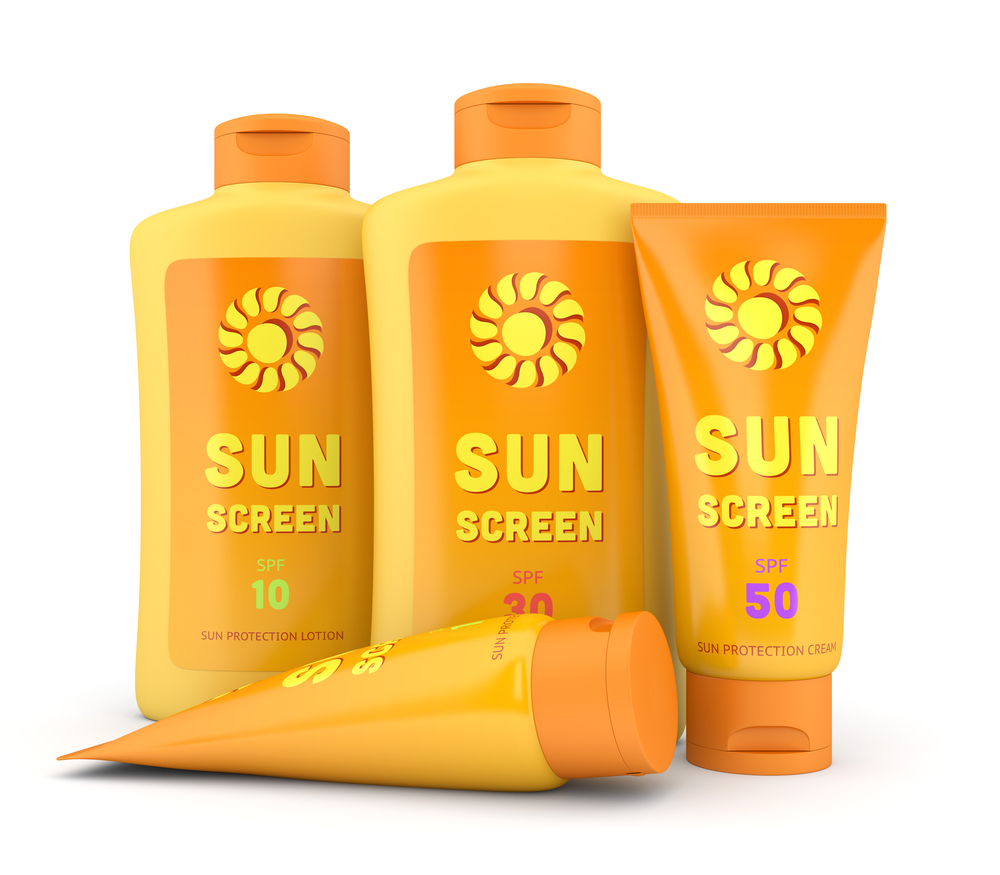Study Shows That Chemicals In Sunscreens Gets Absorbed Into The Human Body In Very High Levels
Source: Thailand Medical News Jan 22, 2020 5 years, 3 months, 4 days, 18 hours, 45 minutes ago
A new study confirms that the
chemicals in
sunscreens such as avobenzone,
oxybenzone, octocrylene, and ecamsule that help shield individuals from the sun's rays, are also absorbed into the body at levels that raise some safety questions. The study was done by the US FDA as a result of previous studies showing the same by private medical institutions.

All studies past and new showed that the active ingredients in popular
sunscreens can be absorbed into the blood at levels that exceed the FDA threshold where they can be presumed safe.
Despite the findings, the US FDA and skin cancer experts were quick to stress that there is no proof that
sunscreen ingredients cause any harm. And people should keep using the products to prevent sunburn and curb the risk of skin
cancer, they said.
Dr. Janet Woodcock, director of the FDA's Center for Drug Evaluation and Research told
Thailand Medical News, "The fact that an ingredient is absorbed through the skin and into the body does not mean the ingredient is unsafe. Rather, this finding calls for further industry testing to determine the safety and effect of systemic exposure of
sunscreen ingredients, especially with chronic use."
In 2019, FDA researchers reported on a study of four active ingredients in widely used
sunscreen lotions and sprays. That study found that all four were absorbed into study volunteers' bloodstreams, at concentrations that far surpassed 0.5 nanograms per milliliter (ng/mL). That's the FDA-set threshold for waiving additional safety testing.
The latest study tested three more active ingredients, along with three additional
sunscreen formulations. Again, all tested
chemicals were absorbed into volunteers' bloodstreams at levels exceeding the safety-testing mark.
Dr. Kanade Shinkai, a dermatologist at the University of California, San Francisco added, "
Sunscreen chemicals, like all over-the-counter medications, only undergo safety testing if they are shown to be systemically absorbed above the FDA safety threshold level. The two FDA studies are the first to ‘clearly demonstrate’ absorption of common
sunscreen ingredients. Whether this is dangerous is still not known," she stressed. "But this highlights the need for safety testing."
Dr Shinkai co-wrote an editorial published with the findings Jan. 21 in the
Journal of the American Medical Association.
Typically, active ingredients in most
sunscreens include chemicals like avobenzone,
oxybenzone, octocrylene, and ecamsule. They work by absorbing UV radiation from the sun and converting it into a small amount of heat.
Although there's no proof those
chemicals harm human health, the FDA says, animal research has raised questions about whether some chemicals like
oxybenzone, in particular can
disrup
t hormone activity.
This new study involved 48 healthy people who were randomly assigned to use one of four
sunscreen sprays or lotions. The participants applied the products, over most of the body, once on day one, and then four times per day for the next three days.
The study found, active ingredients were absorbed at levels beyond the FDA threshold after a single application for most of the participants.
Disturbingly, the study also showed these chemicals often lingered in the body: In more than half of volunteers, levels of avobenzone, octisalate and octinoxate remained elevated for up to seven days, while homosalate and
oxybenzone remained above-threshold for as long as 21 days.
The FDA noted that one limitation of the study is the artificial lab conditions: In real life, people wear
sunscreen outdoors, where they are exposed to heat and sunlight, which might affect absorption.
For individuals who want to avoid chemical-based
sunscreens, Dr Shinkai pointed to an alternative: mineral sunscreens, which contain zinc oxide or titanium dioxide. These sit on the skin surface and act as a shield. These have been tested for systemic absorption and are not absorbed.
Reference : Murali K. Matta et al. Effect of Sunscreen Application on Plasma Concentration of Sunscreen Active Ingredients, JAMA (2020). DOI: 10.1001/jama.2019.20747
